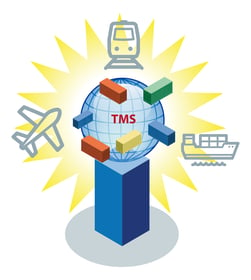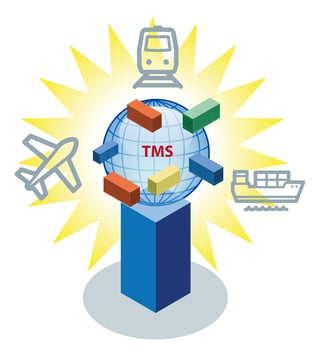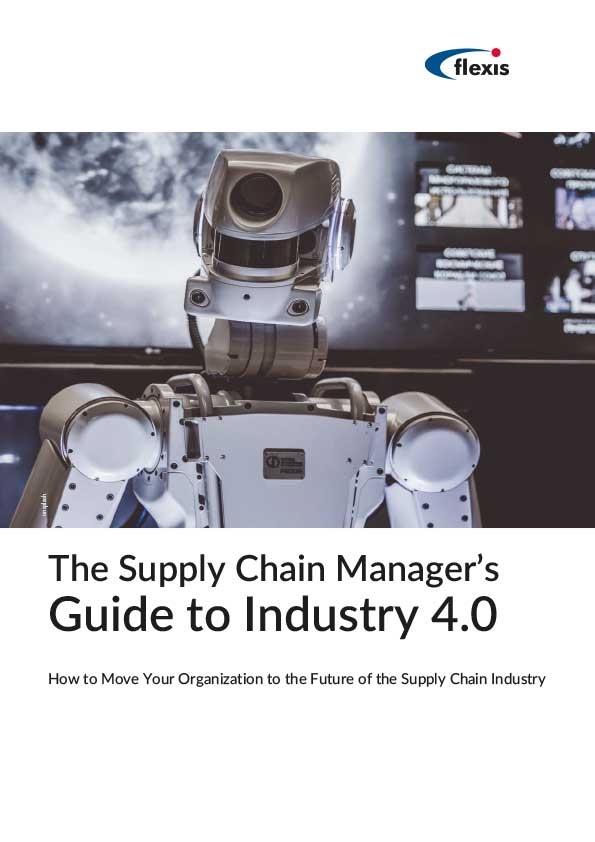Do Transport Logistics Add Business Value?
Nick Ostdick - December 19, 2017

 What comes to mind when you think about transport logistics? Streamlined product movement? Enhanced inventory management and monitoring? Better procurement processes? Or perhaps increased customer satisfaction or customer relations platform? While all these are certainly true, what less frequently comes to mind (perhaps incorrectly so) is enhanced business value. Though increasing business value usually comes into play earlier in the production lifecycle, increasing the efficacy of moving products from the production floor to the customer’s door has ripple effects across the entire value stream.
What comes to mind when you think about transport logistics? Streamlined product movement? Enhanced inventory management and monitoring? Better procurement processes? Or perhaps increased customer satisfaction or customer relations platform? While all these are certainly true, what less frequently comes to mind (perhaps incorrectly so) is enhanced business value. Though increasing business value usually comes into play earlier in the production lifecycle, increasing the efficacy of moving products from the production floor to the customer’s door has ripple effects across the entire value stream.
Because transportation relies on so many varying factors each with their own level of uncertainty or constantly shifting constraints (fuel economy, routing, obstacles in transport routes, and others), the capability to mitigate and respond to these moving targets is a crucial driver in helping manufacturing companies maintain delivery timelines, enhance the accuracy of their delivery dates and windows, and drive enhanced customer service. In addition, because transport networks can be varied and include a number of partners across a wide range of regions or locales, they can lead to even more complexity and nuance in facilitating a transport logistics strategy that drives business value.
So, the question becomes: How can manufacturing companies leverage transport logistics to enhance business value? Or, what components of transport logistics provide the best value propositions for manufacturing to create business moments? With these questions in mind, let’s examine how transport logistics add business value and how companies can leverage a transport strategy to increase their business efficacy.
Cost optimization processes
Transportation is not a fixed cost element of supply chain management. As such, coordinating a transport logistics platform where planners and managers have increased visibility and transparency into the constantly shifting variables is key to reducing overall transportation costs and optimizing the output of resources and capital to ensure the best return in both efficiency and revenue. History is instructive, and manufacturing companies who can gather, sort, analyze, and review previous transportation data are better equipped to explore areas where costs can be reduced and optimized for more effective future transport planning. A transport logistics solution gives planners and managers the power to uncover areas of waste in their transportation strategy (container levels, fuel consumption, inaccurate routing processes, ineffective distribution and warehousing networks, and long lead times between warehousing and delivery) to deploy more lean methods of transportation and avoid bottlenecks or breakdowns in the transit stage of their value chain.
Integration with Industry 4.0
Because Industry 4.0 relies heavily on intelligent solutions communicating data, reporting, and notifications in real-time, Industry 4.0 is perhaps a perfect fit for transport logistics in terms of identifying changing variables in transportation constraints and addressing these variables before they result in breakdowns or bottlenecks. In addition, because transport logistics is often reliant on a large network of partners, stages, or processes, integrating Industry 4.0 into a transport strategy is a seamless way of connecting these disparate points into a cohesive system or architecture whereby all the important players can communicate, collaborate, and respond to transport logistics events with little or no lead time. No longer are manufacturing companies operating their transport logistics strategy on outdated data or irrelevant communication threads. Today, Industry 4.0 allows these functions to take place in the moment between as many players as necessary.
Maneuverability in operational constraints
Imagine a certain production program is scheduled to produce X amounts of units that need to be transported to a certain distribution facility by a certain date. However, unforeseen changes to said production program mean a significant reduction in the number of units, which directly impacts transport capacity. Where before a manufacturing company had budgeted enough space to move X amount of units, this reduction either means a longer lead time to when a full truck/container can be shipped, or an inefficient use of capacity whereby a half or less than half truck or container is utilized. However, a transport logistics strategy and solution gives planners and managers the power to adapt to these operational shifts by identifying the best routes, transport modes, and delivery windows to avoid incurring losses in resources and time in addressing these changing variables. In addition, a transport logistics solution allows manufacturing companies to engage in simulations and what-if scenarios to plan accordingly for such events and craft comprehensive fail-safe plans to avoid bottlenecks stemming from operational shifts.
Emphasis on customer service
The value of a transport logistics solution in enhancing customer satisfaction and service cannot be overstated. While the value proposition internally for manufacturing companies should now be quite apparent, the value externally or in a customer-facing avenue should be easily visible from the start. A company’s ability to provide the right product at the right time in the right place is paramount in driving a positive customer relations platform and increasing a company’s client base and footprint. Because a transport logistics solution provides planners and managers with the power to ensure the right products arrive in the right condition at the right moment, customers will not only be more apt to work with a given manufacturing company in the future, but said manufacturing company will also create more stable and productive business relationships with partners in their supply networks.
LATEST POSTS
- Understand Circular Economy in The Manufacturing Industry
- How Can Industry 4.0 IT Integration Be Achieved Smoothly?
- The Significance of Order Sequencing in Discrete Manufacturing
- How to improve your Supply Chain Management: The Power of Control Towers
- Optimizing Human Resource Scheduling in Manufacturing: A Technological Approach



